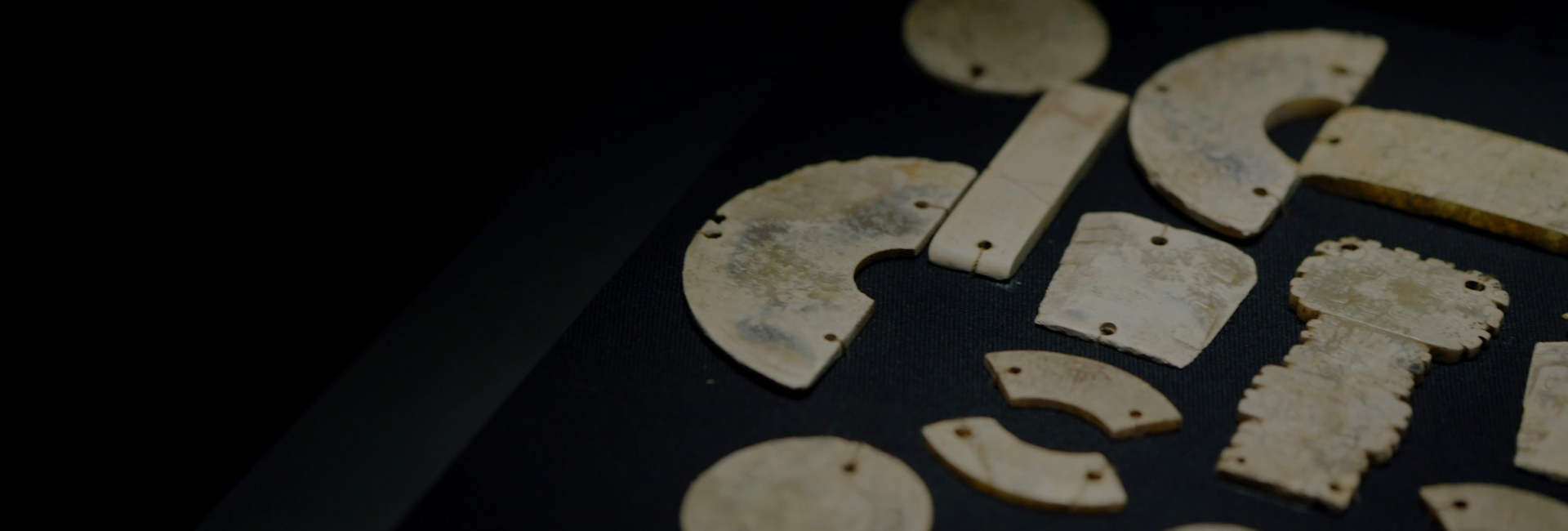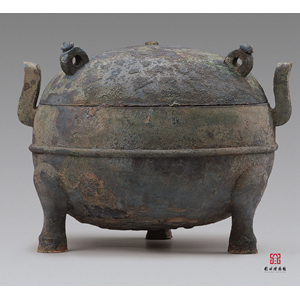

Xuzhou Han Culture Academic
Submit
【XU BO】Maximum daily capacity: 10,000 person-times Instantaneous capacity: 2,500 person-times


◇ Heritage No. :
◇ Collection Name:Copper Columns Ding
◇ Historical date:Western Han dynasty
◇ Collection Size:High 26, abdominal diameter 31 cm
◇ Collection Source:Unearthed in the Funeral Pit of Yanggui Mountain in 2005 Introduction:
Fourteen Copper Ding were unearthed in the funeral pit of Yanggui Mountain, some of which have the same size. Seven of them are decreasing in size, which is the column ding shown in the figure below. This set of ding are not exactly the same. They all have lids, and there are 3 bridge-shaped buttons on the lids, and there are small circular protrusions on the buttons. Hoofed feet, ears attached, deep abdomen, with a ridged string pattern on the abdomen. The weight and capacity inscriptions are engraved on all seven copper ding, one of which (the fourth tripod from the left) is inscribed "15 Jin 10 Liang in weight".The copper ding appeared in the Xia Dynasty (the earliest ding was found to be Erlitou Culture Phase IV). After the development of Shang Dynasty, it reached its heyday in the Zhou Dynasty. In view of the lack of materials, the system of using ding in the Xia and Shang dynasties is still not clear, but it is certain that tripods were an important part of the ritual system at that time. Various indications indicate that Fang Ding played an important role in the Shang Dynasty society. During the late Shang Dynasty, Zhou Xianren established a food-centric system, and Ding's status began to emerge. After Zhou destroyed the business, Zhou people pay more attention to food vessels instead of wine ones, gradually formed a bronze ritual vessel system with a tripod as the core.
In addition to being used as a cooker and food container in daily life, Ding is more used for important ceremonial activities such as feasts and sacrifices of nobles. Unlike other bronze ceremonies, Ding was also given more symbols of power, including royal power. Therefore, Xia Zhujiuding moved to Shang and Zhou dynasties; Qin destroyed Zhou and Zhou Ding entered Qin Zhi. During the Spring and Autumn Period, the king of Chuzhuang asked Wang Sunman (Zhou) about the size and weight of the tripod (actually looking at the throne), which is more familiar to later generations. It is not difficult to imagine Ding's status in the entire pre-Qin ritual system.
In order to "be respectful and humble, don't go up and down", since the Western Zhou Dynasty, a strict etiquette system has been established, and ding system is the most important part of it. He Xun's note in "Biography of the Spring and Autumn Years of the Ram and Two Years of the Gong": "Ceremony: Heavenly Son Jiuding, princes Qiding, Dr. Qing fifth, Yuanshi Sanye." "Yi Li" records: The monarch (princes) used Jiuding, Qing uses seven tripods, doctors use five tripods, and soldiers use three ding or one tripod. The two statements are slightly different, but the essence is the same, indicating that "the sergeant cannot be a corporal," and there are strict restrictions on the number of ding for different identities. Also from some literature, the number of ding used by different people may be different on different occasions. There are still some differences between the archeological findings and documentary records of the tripod system used in the Zhou Dynasty. How to explain them is still controversial in academic circles. However, Column Ding's discovery confirmed that there was indeed a strict system of using Ding in Zhou Dynasty.
The column ding refers to a group ding with the same shape (or similar) but with the same size (or the same). Since Guo Baojun first proposed column ding, column ding has been confirmed by more and more archeological discoveries, and it has become an important basis for studying the Zhou Dynasty system. Column ding appeared in the early Western Zhou Dynasty, and developed to the heyday in the Eastern Zhou Dynasty. From the current findings, the number of columns used in different identities does vary, but this difference changes over time. The emergence of column ding was also related to the advancement of process technology at that time, with multiple models, making it possible to achieve serial production of copper casting. "The Han Dynasty inherited the Qin system, and the Zhou rituals were adopted." In the Western Han society, some etiquette systems of the Zhou Dynasty continued. Five dings were used in the "burial" of the "Shiguanjian" in the tomb of King Chu in Shizi Mountain in Xuzhou, and seven dings were used in the tomb of Queen Chu of Dongdong Mountain, which should be a continuation of the system of the ding of the Zhou Dynasty. From this set of column ding and the column ding from the Tomb of Queen Chu in Dongdong Mountain, the shape and specifications of column ding in the Western Han Dynasty are not as strict as the Zhou Dynasty. The shape of the column ding is also not exactly the same, and it is obviously a patchwork.